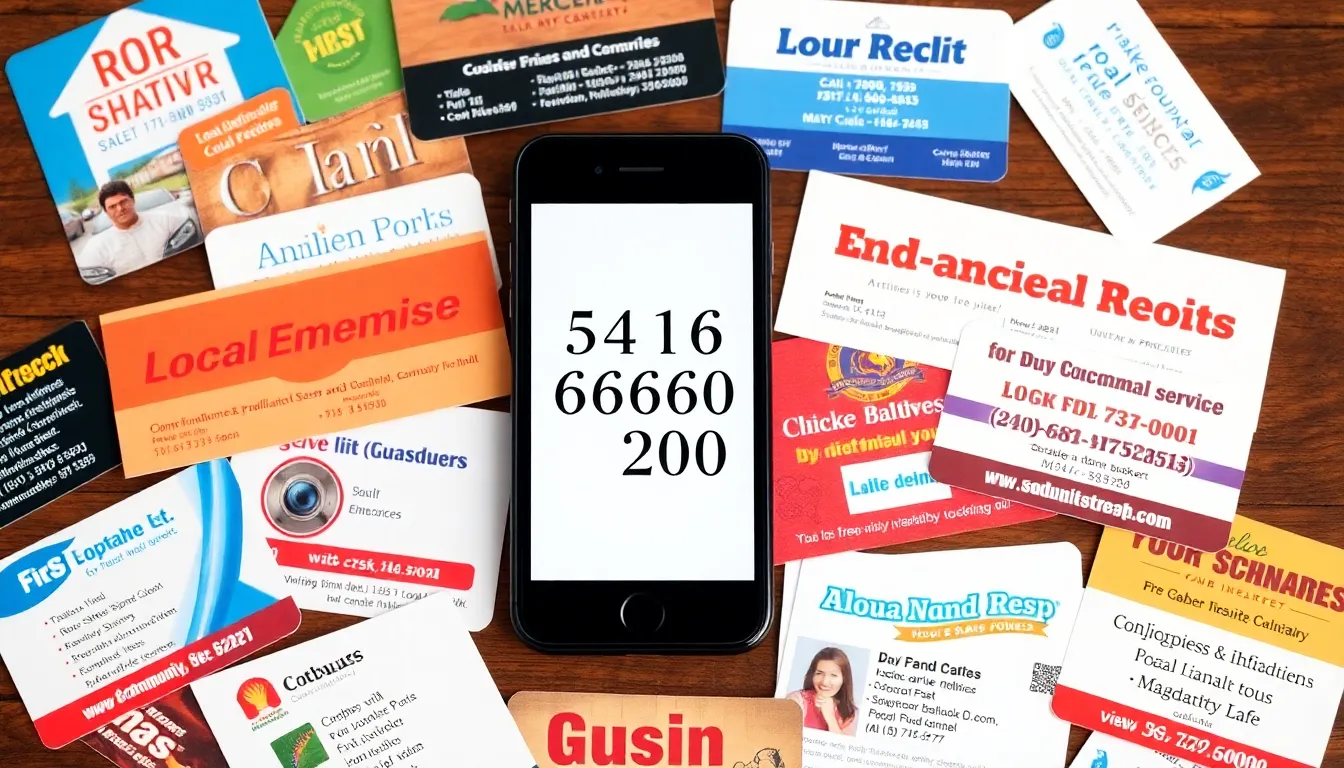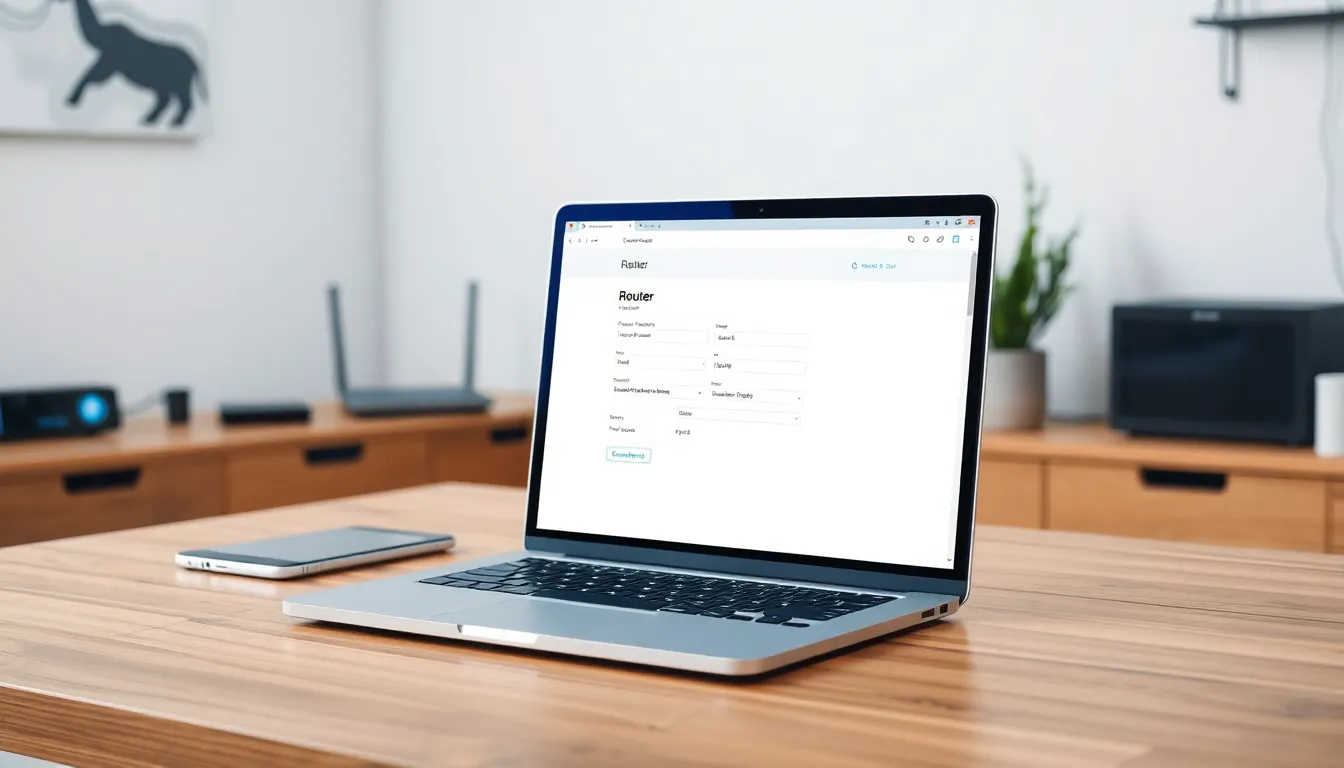Table of Contents
ToggleIn today’s tech-savvy world, mobile apps for schools are like the secret sauce that makes education not just palatable but downright delicious. Imagine a classroom where homework doesn’t feel like a chore and communication flows smoother than a well-oiled machine. With the right apps, teachers can engage students in ways that even the most entertaining cat videos can’t compete with.
These digital tools are revolutionizing the way students learn and teachers teach. From organizing assignments to fostering collaboration, mobile apps are turning traditional education on its head. So buckle up and get ready to explore how these nifty little applications are transforming classrooms into vibrant hubs of learning, making education more accessible and fun for everyone involved. Who knew that learning could come with a side of convenience and a splash of excitement?
Overview of Mobile Apps for Schools
Mobile apps for schools serve as essential tools in modern education. These applications support communication between teachers, students, and parents. They streamline access to resources and improve engagement in learning activities.
Various types of mobile apps cater to specific needs in educational settings. Learning management systems, such as Google Classroom or Schoology, facilitate assignment tracking and grading. Educational apps, like Kahoot! and Duolingo, make serious subjects enjoyable through games and interactive quizzes. Attendance management apps help schools monitor student presence efficiently.
Integration occurs seamlessly with other technologies. Many apps sync with school databases, allowing real-time updates on attendance, grades, and announcements. Additionally, social media apps enhance community building among students. Platforms like ClassDojo create virtual classrooms where parents can see student progress.
Data from a 2022 report by the Education Week Research Center indicates that over 80% of teachers believe mobile apps significantly affect student engagement. Schools adopting these technologies report increased participation in classroom discussions and improvement in learning outcomes.
Mobile apps also offer personalized learning experiences. Customized content and assessments cater to individual student needs and learning paces. Tools such as Quizlet can transform study habits by enabling students to prepare for exams efficiently.
Security remains a top priority in app development. Developers must ensure student data protection compliance with regulations like FERPA. Regular updates enhance security features, keeping sensitive information safe.
Mobile apps for schools contribute to a more connected, engaging, and secure educational environment. They foster collaboration, streamline processes, and create opportunities for personalized learning experiences.
Types of Mobile Apps for Schools

Mobile apps for schools come in various categories, each serving unique purposes to enhance educational experiences. Understanding these types helps in selecting the right solutions for specific needs.
Learning Management Systems
Learning management systems streamline the educational process by centralizing course materials and resources. Google Classroom stands out as a popular choice, allowing teachers to distribute assignments and manage classrooms efficiently. Other platforms, such as Moodle and Schoology, support interactive learning experiences by enabling quizzes and feedback loops. Data shows that over 80% of educators view these systems as vital for improving student learning. Features like real-time tracking of student progress keep both instructors and students informed.
Communication and Collaboration Tools
Communication and collaboration tools play a crucial role in connecting teachers, students, and parents. Apps like ClassDojo facilitate a community-focused environment, enhancing transparency between educators and families. Messaging features and notification systems maintain open lines of communication, fostering a supportive atmosphere. Also, platforms such as Slack or Microsoft Teams promote collaborative learning and project management among students. The shift to these digital communications reflects a growing interest in creating cohesive support networks within the educational landscape.
Administrative and Management Apps
Administrative and management apps simplify school operations by automating routine tasks. Attendance management tools offer real-time tracking, ensuring accurate records without manual input. Examples include Smart Attendance and Attendance Tracker, designed for efficiency. School administration apps, such as FACTS or Infinite Campus, provide comprehensive solutions for grading, scheduling, and reporting. Utilizing these apps can lead to significant time savings for school staff, demonstrating the efficiency of mobile technology in managing school affairs.
Benefits of Using Mobile Apps in Education
Mobile apps play a crucial role in enhancing the educational landscape. They transform traditional classroom settings into interactive and personalized learning environments.
Enhanced Learning Experience
Mobile apps encourage active participation among students. Features like gamification and interactive quizzes make learning engaging. Tools such as Duolingo and Quizlet enable tailored educational experiences that cater to individual needs. These apps reinforce concepts through repetition while making the process enjoyable. Furthermore, students can access resources anywhere, allowing for flexible learning that fits their schedules.
Improved Communication
Mobile apps facilitate seamless communication between teachers, students, and parents. Platforms like ClassDojo and Remind offer instant updates on assignments and classroom activities. Users appreciate the ability to send messages and share feedback quickly. This level of connectivity fosters a sense of community within the educational setting. Established channels of communication ensure everyone remains informed, ultimately supporting student success.
Streamlined Administration
Administrative tasks become more manageable with mobile apps developed for schools. Tools automate processes like attendance tracking and grading, saving valuable time for educators. Teachers can focus more on instruction rather than paperwork. Efficiency increases as these apps centralize information, simplifying access for all stakeholders. Data management becomes more organized and approaches to school operations adapt to modern technology.
Challenges of Implementing Mobile Apps in Schools
Implementing mobile apps in schools presents several challenges that require attention.
Technical Limitations
Technical limitations often hinder the effective deployment of mobile apps. Many schools lack sufficient infrastructure, such as reliable Wi-Fi and adequate devices for all students. Insufficient network coverage can disrupt access to essential resources. Compatibility issues arise with varying operating systems, leading to inconsistent experiences across devices. Moreover, outdated hardware and software may struggle with new app functionalities. Additionally, schools may face challenges in integrating apps with existing educational technologies. These technical gaps can undermine the overall effectiveness of mobile applications in enhancing the learning environment.
User Adoption
User adoption remains crucial for the success of mobile apps in educational settings. Many educators and students may resist using new technologies due to a lack of training or familiarity. Resistance can stem from concerns about usability and effectiveness, particularly among educators accustomed to traditional methods. Furthermore, students might show reluctance to adopt applications that differ from their preferred technologies. Engaging parents also plays a pivotal role, as their support can help encourage student and teacher participation. Without a proactive approach to training and engagement, the potential benefits of mobile apps may not fully materialize in schools.
Mobile apps are reshaping the educational landscape by fostering communication and enhancing engagement among students, teachers, and parents. Their ability to create dynamic learning environments makes education more accessible and enjoyable. As schools continue to embrace these digital tools, the potential for personalized learning and streamlined administrative tasks grows.
While challenges exist in implementation and user adoption, the benefits of mobile apps in education far outweigh the drawbacks. By prioritizing training and community involvement, schools can fully leverage these technologies to improve learning outcomes. Ultimately, mobile apps are not just tools; they’re essential components of modern education that pave the way for a connected and interactive future.





